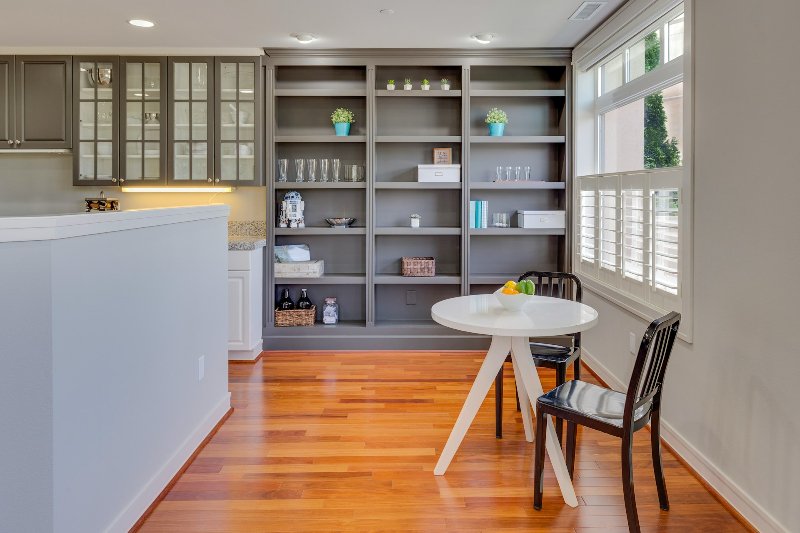Blog > What to Know about Refinishing Hardwood Floors
What to Know about Refinishing Hardwood Floors
Tuesday December 10, 2024

Introduction
Refinishing hardwood floors can breathe new life into your home, enhance its appearance, and even increase property value. However, it's a task that requires careful consideration and skill. Whether your floors are scuffed, scratched, or simply worn from decades of use, refinishing can restore their original beauty. Here’s what you need to know about the process, including why you might want to consider hiring professionals for the job.
What is Hardwood Floor Refinishing?
Hardwood floor refinishing involves sanding the uppermost layer of the floor to reveal fresh wood beneath. Once sanded, the floor is stained to your desired shade and finished with a protective sealant. This process not only restores the aesthetic appeal of your floors but also provides a protective coating that can extend the lifespan of the wood.
Signs That Your Floors Need Refinishing
Several indicators can signal that your hardwood floors need refinishing. If your floors have deep scratches, stubborn stains, or extensive wear from high foot traffic, refinishing may be necessary. Water damage that causes discoloration or warping is another sign. Additionally, if your floors are more than 20 years old or have never been refinished, it might be time to consider this process.
Preparing for Refinishing
Before refinishing begins, it's essential to prepare your home and the floors themselves. This preparation involves removing all furniture and rugs from the room. You should also check the floor for protruding nails and ensure they are nailed down to prevent damage to sanders. Sealing air vents and doorways can help reduce the spread of dust throughout your home.
The Refinishing Process
Refinishing hardwood floors typically involves several steps:
- Sanding: This is the most critical stage, where the old finish and top layer of wood are removed. Proper sanding levels the surface, removes imperfections, and prepares the wood for staining. This process generates significant dust, which needs to be carefully contained and cleaned.
- Staining: After sanding, the wood can be stained to the desired color. You can choose to enhance the natural color of the wood or change it entirely. It's important to test stains on a small section to ensure satisfaction with the color.
- Sealing: The final step involves applying a sealant to protect the wood. This usually consists of multiple layers of polyurethane or a similar finish to provide durability and a shiny appearance.
Why Hire Professionals?
While DIY refinishing kits are available, there are several compelling reasons to hire professionals. First, the sanding process requires careful skill and high-quality equipment. An inexperienced person might sand too deeply, causing irreparable damage to the floors.
Professionals possess the expertise to properly prepare, sand, stain, and seal floors efficiently. They also have access to advanced dust containment systems, minimizing cleanup time and health risks associated with wood dust. Additionally, they can guide you in selecting the best stain and finish for your type of wood and desired look.
Costs Involved
Refinishing costs can vary based on the size of the area, the condition of the floors, and your geographical location. While professional services come at a cost, they often save money in the long run by reducing the likelihood of costly mistakes and the need for premature refinishing.
The Importance of Proper Timing
Timing can significantly impact the success of your refinishing project. Hardwood floors are sensitive to humidity; thus, planning the project in a season with moderate humidity is advisable. This helps in ensuring the stain and sealant adhere properly to the wood. Aim for the milder seasons like spring or fall if possible.
Maintenance After Refinishing
Once your floors are refinished, routine maintenance will help preserve their appearance and durability. Use rugs in high-traffic areas to reduce wear and tear, and regularly clean with a soft, damp mop to remove dust and dirt. Avoid harsh chemicals that can damage the finish, and consider using furniture pads to prevent scratches.
Conclusion
Refinishing hardwood floors can transform your living spaces, making them beautiful and inviting. It is a complex process that is best handled by professionals who have the experience and equipment to do the job right. By entrusting your floors to experts, you can achieve the best results with minimal hassle and enjoy the renewed beauty and longevity of your hardwood floors for years to come.
Ready to give your hardwood floors a makeover? Contact Luxx Flooring for expert advice and professional refinishing services. Let's work together to make your floors shine like new. Visit our website today to get started!
